One could never hope to see all the many splendors of South East Asia in one lifetime. The famed destinations of Kuala Lumpur, Cebu, Bangkok and Brunei often dominate discourses concerning the best places to visit in the region. It is often forgotten that not far from the hot-spots a treasure trove of unforgettable and, in many cases, unfrequented places can be accessed with a minimum of effort and expense. Listed here are just a few destinations in South East Asia which, though dazzling in their own ways, are too often overlooked by travelers.
The Plain of Jars: Laos
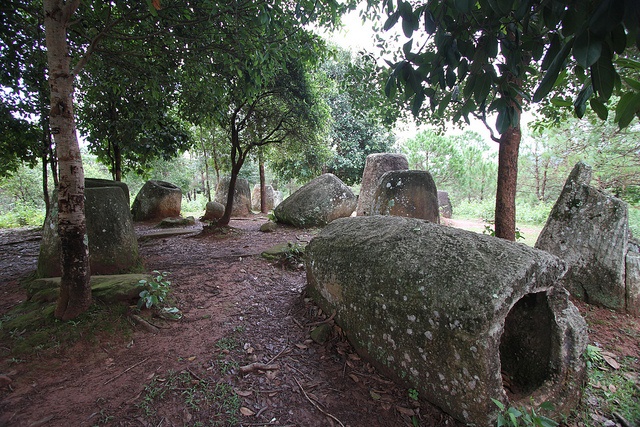
Photo Credit: MAG (Mines Advisory Group), Flickr
Though Easter Island and Stonehenge have entered the global vernacular of the world’s great archeological mysteries, shrouded in myth and new-age conjecture, the equally mysterious Plain of Jars located on the Xieng Khouang plateau, has not. This is surprising, as the innumerable clusters of stone jars that litter the landscape have long baffled archeologists. Only recently have experts generally agreed that the jars served as part of Iron Age burial rituals and not, as legends purport, as the libation goblets for a race of giants.
During the Vietnam War, many of the bizarre cylindrical relics were destroyed (usually by land-mines). Now, however, the area has been totally cleared of explosives and visitors can explore the scenic, hill-bordered terrain at their leisure and take in one of the world’s most unusual archeological sites.
See Also:
Kelimutu: Indonesia
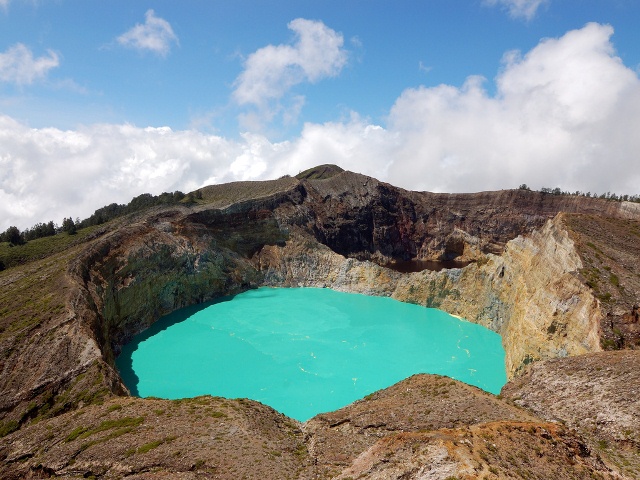
Photo Credit: Rosino, Flickr
The dazzlingly colored crater lakes of the inactive caldera that is Kelimutu are well worth the visit, particularly as the Flores archipelago in which Kelimutu is situated is not often frequented by tourists. Though the journey to these magnificent lakes was once arduous and dangerous, a paved road leading from a spacious car park now allows the visitor far easier access, as well as a picturesque 30 minute walk that runs through the Volcanos surprisingly vibrant surrounding forest. The car park is located at the quaint village of Moni, which is idyllically situated only a short distance away from paradisiacal hot-springs, verdant rice fields and the bustling Lio ikat markets.
The astounding, and gradually changing, colors of the lakes can be attributed to the varying mineral contents found in the water. The locals, however, state that the change is the result of disgruntled ancestral souls.
See Also: The Strength and Beauty of Indonesia
Siquijor: The Phillipines
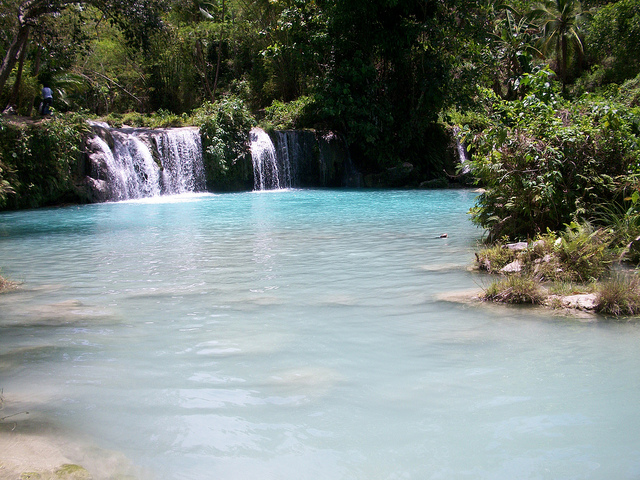
Photo Credit: adamgn, Flickr
This lesser known island paradise is located in the central Visayas region of the Phillipines. Guests can relax on white sands, swim beneath the magnificent three-tiered Cambugahay Falls, and even enjoy the natural wonders of the local butterfly park. With all the unspoilt wonders of Siquijor, it is curious to note that it is not nearly as popular as many other beach destinations found throughout the Phillipines. Perhaps part of the reason for this is that the island has a long reputation being populated by witches and shaman who work their craft both for good and ill (Siquijor was known by the Spaniards as the Island of Fire). The growing (but still not too extensive) tourism industry of Siquijor is beginning to make effective use of the islands supernatural reputation. Despite this, witch-craft is generally spoken of throughout the island only in hushed tones.
The coral reefs that hem Siquijor are perfect for scuba diving, and have long been home to parrotfish, sea turtles and even clown fish (made famous by the Disney film Finding Nemo).
Wat Umong: Thailand
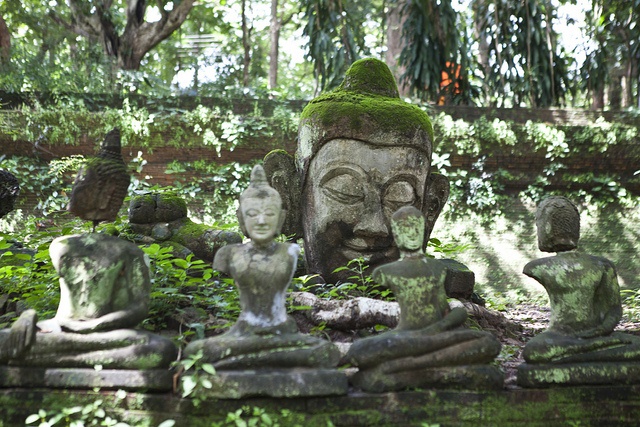
Photo Credit: mollymazilu, Flickr
Built in 1297, this tranquil Buddhist temple, located in Chiang Mai, is replete with impressive monuments, statues, and gardens that are sure to leave the visitor with a greater sense of enlightenment. In addition to the staple Buddhist and Naga (guardian snake) statues is an Ashok Pillar (commemorating the spread of Buddhism in Northern Thailand during the 13th century). Signs bearing words of wisdom hang from the trees (most of which are simplified Buddhist proverbs) and, below the impressive chedi (an ornately carved mound) are several tunnels that, at one stage, were ornately painted to resemble the surrounding foliage. The reason for this is that the reigning king Manglai wanted to prevent a particular ‘mad monk’ who resided in the temple from wandering off into the forest. Monks continue to reside in Wat Umong, and guests are encouraged to meet, greet and learn from them.
There is a small zoo behind the temple, as well as some native deer which frequent the temple and which can be fed.
See Also:
Mai Chau: Vietnam
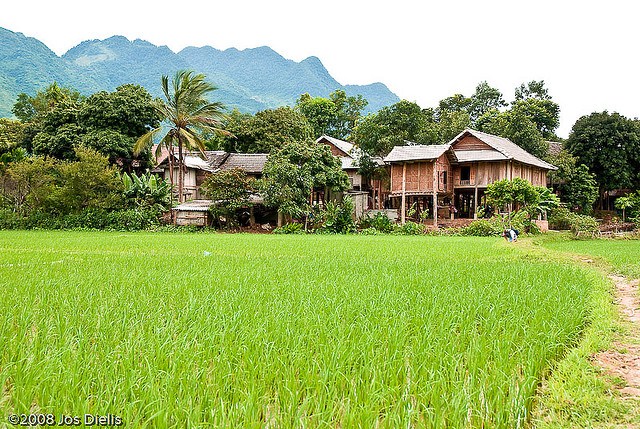
Photo Credit: Jos Dielis, Flickr
The mist wreathed, verdant district of Mai Chau in the Hoa Binh province epitomizes the picturesque vision of Vietnam that, sadly, is more often seen in films and television series than it is first hand. The lush paddy fields, grazing water-buffalo and emerald mountains are enough to keep anyone who wants to enjoy the traditional Vietnamese rural lifestyle enthralled for days. Despite this, potential visitors should be aware that the stunning countryside is a stark contrast to the rather dilapidated village of Mai Chau.
The largest ethnic groups in the region are colloquially known as the “white” and “black” Thais whose ancestors are believed to hail from the neighboring South East Asian country. Homestay accommodation with the locals can be arranged and is affordable, although the regions luxurious lodge is certain to appeal. Cycling and trekking tours of the surrounding landscape can also be booked and is a must for anyone who wants to truly immerse themselves in Mai Chau’s natural and cultural wonders.
See Also: Exploring Vietnam
Perhentian Islands: Malaysia
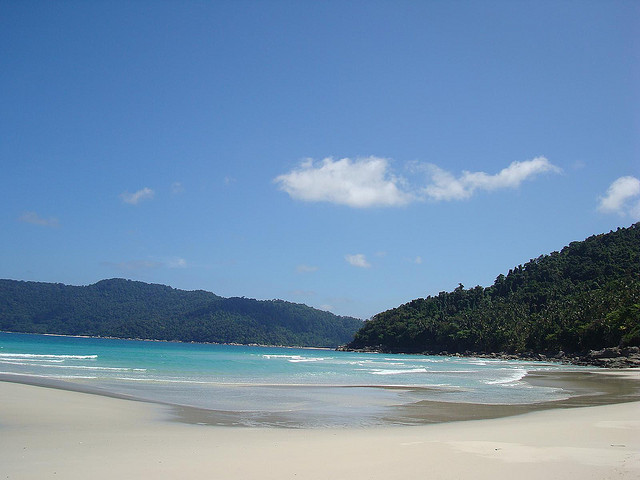
Photo Credit: gemb1, Flickr
Just off the coast of north eastern Terengganu, the coral bedizened islands of Perhentian are a snorkeler’s paradise. Many species of tropical fish and, of course, sea turtles populate Perhentian’s waters as well as the odd shark (though these are very unlikely to attack divers). Kayaking and jungle trek tours can also be arranged.
There are a number of delicious seafood restaurants and chill-out bars on Perhentian where visitors can relax after a day’s worth of exploring the turquoise waters. The choice of accommodation is relatively limited, though there are several convenient and relatively inexpensive chalets to choose from. Perhentian Kecil Island tends to attract a significant amount of tourists so for anyone who wants to get a little more peace and tranquility, Besar island may be preferred.
March to April is the ideal time period in which to visit the Perhentian Islands. The eastern monsoons that whip the islands at other times make effective relaxation near impossible.
See Also:
Read More:
"ExpatGo welcomes and encourages comments, input, and divergent opinions. However, we kindly request that you use suitable language in your comments, and refrain from any sort of personal attack, hate speech, or disparaging rhetoric. Comments not in line with this are subject to removal from the site. "




















